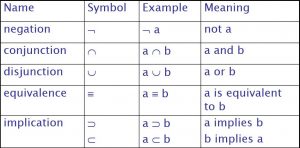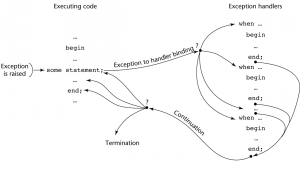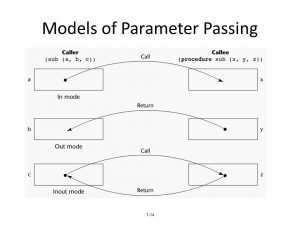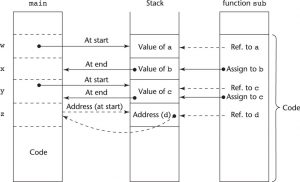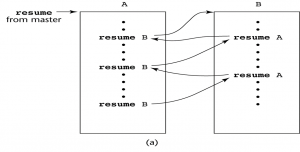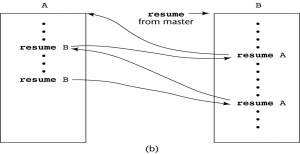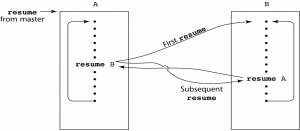Object-Oriented Programming
December 2, 2017
There are many object-oriented programming (OOP) languages
–Some support procedural and data-oriented programming (e.g., Ada 95+ and C++)
–Some support functional program (e.g., CLOS)
–Newer languages do not support other paradigms but use their imperative structures (e.g., Java and C#)
–Some are pure OOP language (e.g., Smalltalk & Ruby)
–Some functional languages support OOP, but they are not discussed in this chapter
Three major language features:
–Abstract data types (Session GSLC 02)
–Inheritance
- Inheritance is the central theme in OOP and languages that support it
–Polymorphism
I. Inheritance
- Productivity increases can come from reuse
–ADTs are difficult to reuse—always need changes
–All ADTs are independent and at the same level
- Inheritance allows new classes defined in terms of existing ones, i.e., by allowing them to inherit common parts
- Inheritance addresses both of the above concerns–reuse ADTs after minor changes and define classes in a hierarchy
Object-Oriented Concepts
- ADTs are usually called classes
- Class instances are called objects
- A class that inherits is a derived class or a subclass
- The class from which another class inherits is a parent class or superclass
- Subprograms that define operations on objects are called methods
- Calls to methods are called messages
- The entire collection of methods of an object is called its message protocol or message interface
- Messages have two parts–a method name and the destination object
- In the simplest case, a class inherits all of the entities of its parent
- Inheritance can be complicated by access controls to encapsulated entities–A class can hide entities from its subclasses–A class can hide entities from its clients
–A class can also hide entities for its clients while allowing its subclasses to see them
- Besides inheriting methods as is, a class can modify an inherited method
–The new one overrides the inherited one
–The method in the parent is overriden
- Three ways a class can differ from its parent:
- The parent class can define some of its variables or methods to have private access, which means they will not be visible in the subclass
- The subclass can add variables and/or methods to those inherited from the parent
- The subclass can modify the behavior of one or more of its inherited methods.
- There are two kinds of variables in a class:
–Class variables – one/class
–Instance variables – one/object
- There are two kinds of methods in a class:
–Class methods – accept messages to the class
–Instance methods – accept messages to objects
- Single vs. Multiple Inheritance
- One disadvantage of inheritance for reuse:
–Creates interdependencies among classes that complicate maintenance
Dynamic Binding
- A polymorphic variable can be defined in a class that is able to reference (or point to) objects of the class and objects of any of its descendants
- When a class hierarchy includes classes that override methods and such methods are called through a polymorphic variable, the binding to the correct method will be dynamic
- Allows software systems to be more easily extended during both development and maintenance
Dynamic Binding Concepts
- An abstract method is one that does not include a definition (it only defines a protocol)
- An abstract class is one that includes at least one virtual method
- An abstract class cannot be instantiated
The Exclusivity of Objects
–Advantage – elegance and purity
–Disadvantage – slow operations on simple objects
- Add objects to a complete typing system
–Advantage – fast operations on simple objects
–Disadvantage – results in a confusing type system (two kinds of entities)
- Include an imperative-style typing system for primitives but make everything else objects
–Advantage – fast operations on simple objects and a relatively small typing system
–Disadvantage – still some confusion because of the two type systems
Single and Multiple Inheritance
- Multiple inheritance allows a new class to inherit from two or more classes
- Disadvantages of multiple inheritance:
–Language and implementation complexity (in part due to name collisions)
–Potential inefficiency – dynamic binding costs more with multiple inheritance (but not much)
–Sometimes it is quite convenient and valuable
Allocation and DeAllocation of Objects
- From where are objects allocated?
–If they behave line the ADTs, they can be allocated from anywhere
- Allocated from the run-time stack
- Explicitly create on the heap (via new)
–If they are all heap-dynamic, references can be uniform thru a pointer or reference variable
- Simplifies assignment – dereferencing can be implicit
–If objects are stack dynamic, there is a problem with regard to subtypes – object slicing
- Is deallocation explicit or implicit?
Nested Classes
- If a new class is needed by only one class, there is no reason to define so it can be seen by other classes
–Can the new class be nested inside the class that uses it?
–In some cases, the new class is nested inside a subprogram rather than directly in another class
–Which facilities of the nesting class should be visible to the nested class and vice versa
Inheritance Example in C++
class base_class {
private:
int a;
float x;
protected:
int b;
float y;
public:
int c;
float z;
};
class subclass_1 : public base_class { … };
// In this one, b and y are protected and
// c and z are public
class subclass_2 : private base_class { … };
// In this one, b, y, c, and z are private,
// and no derived class has access to any
// member of base_class
Implementing OO Constructs
- Two interesting and challenging parts
–Storage structures for instance variables
–Dynamic binding of messages to methods
Dynamic Binding of Methods Calls
- Methods in a class that are statically bound need not be involved in the CIR; methods that will be dynamically bound must have entries in the CIR
–Calls to dynamically bound methods can be connected to the corresponding code thru a pointer in the CIR
–The storage structure is sometimes called virtual method tables (vtable)
–Method calls can be represented as offsets from the beginning of the vtable

